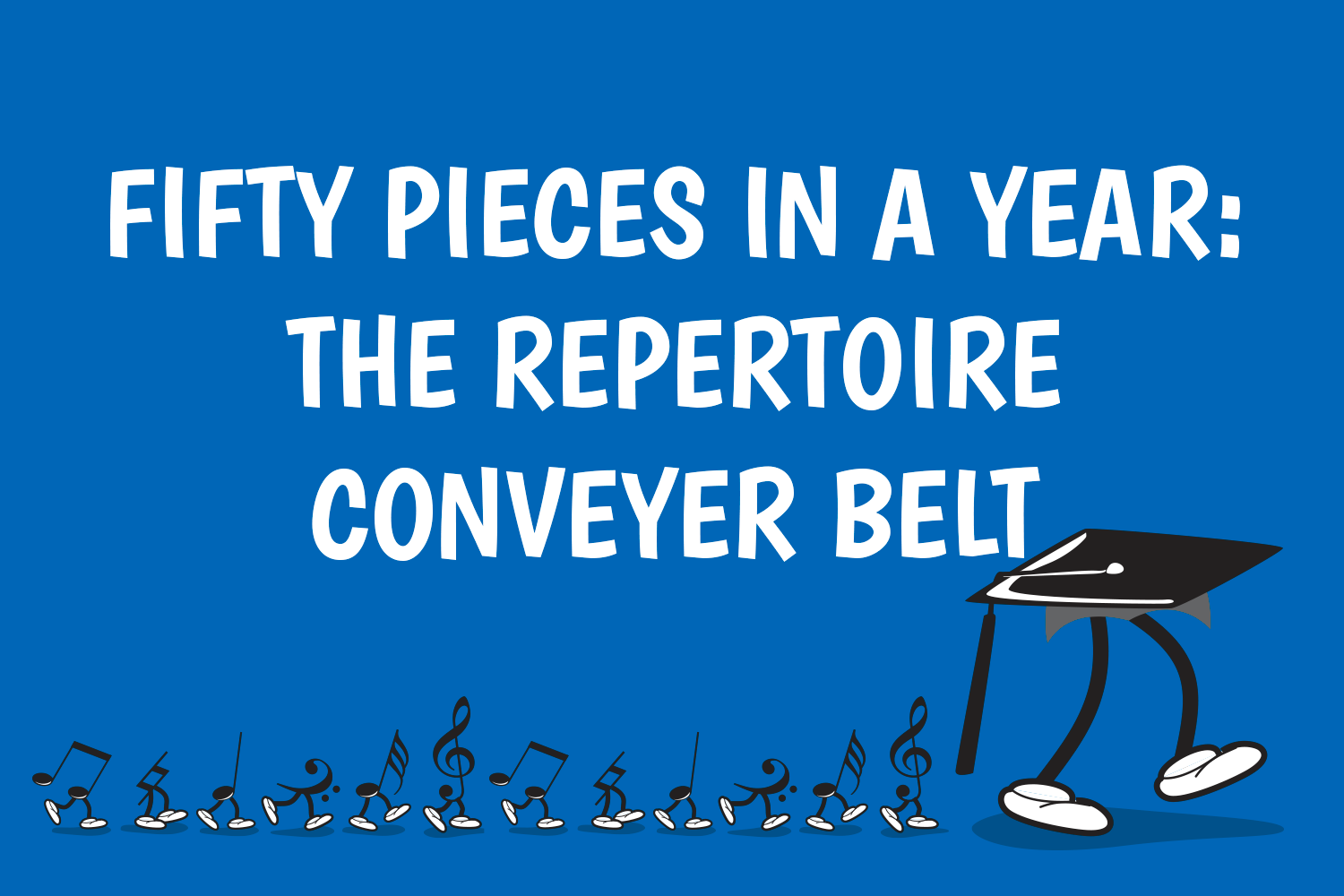Fifty Pieces in a Year: The Repertoire Conveyer Belt

This term I started the 50-piece challenge with my private students. That’s right, let’s see who can learn fifty pieces in one year!
At first all of their eyes popped out of their heads. Fifty pieces? In a year? Most of them couldn’t fathom learning fifty pieces in a lifetime, let alone 12 months!
So the first real challenge here was to calm everybody down and explain how it could be done. The idea was to churn through lots and lots of repertoire, but it didn’t all have to be difficult repertoire!
I set each student a minimum standard of repertoire they could learn. For example, a student working towards a 5th grade exam would learn at least 5 or 6 pieces over the year at 5th grade level – but the other 44 pieces could be anything from 1st grade onwards, from a variety of different repertoire books. So, a few of their pieces are ‘long term’ projects (i.e. the exam pieces, at their grade level), and the rest are ‘rocket’ pieces, a term coined by my friend and colleague Abe Cytrynowski – pieces learned at the speed of a rocket!
I explained that in order to get through the 50 pieces, they would need to present at least one new piece each week, and in some weeks two new pieces. Perhaps the new pieces wouldn’t be completely learned and perfected in one week, but that’s ok… it would be like a conveyer belt of repertoire, in which new pieces keep coming on at the beginning, and once they’re learned they drop off the end (except for the long-term exam repertoire, which would stay on the conveyer belt for a long time!).
All of my students now have their names on a chart on the wall, with columns 1-50 next to their names. They get a dot for each new piece they start, and the dot is then transformed into a tick (i.e. it’s ‘done’) when the piece is finished.
The most intriguing thing about the 50-piece challenge chart is the element of competition it has inspired. Despite my assurances that the only person they had to worry about was themselves, each week they come along eager to see who’s in the ‘lead’, trying to figure out whether 5 dots and 4 ticks (that would be 5 pieces in progress and 4 pieces done and dusted) beats 4 dots and 5 ticks!
The system is easily tailored to individual students. A piece that is easy for one student will be a challenge for another, so it’s all a matter of find appropriate repertoire. For beginner pianists, even the simplest 8-bar separate hands exercise can count as a ‘piece’.‘Dozen a Day’ is great for this. The technique and repertoire books in the ‘Exploring Piano Classics’ series by Nancy Bachus are fantastic. For intermediate pianists, the ‘Getting To’ series is always great value, and remains so right up to Grade 5 – these books can serve as exam repertoire for a Prelim student and rocket pieces for the older sibling doing Grade 4 or so!
The 50-piece challenge has not only stimulated a healthy sense of competition, it has made sure the students don’t get into a ‘rut’ of learning just a few pieces over a whole year and becoming completely bored. Students love seeing their ‘dots’ transform into ‘ticks’! It has also done wonders for their sight reading skills, because they are constantly reading and experiencing new music. I highly recommend this fun activity!
